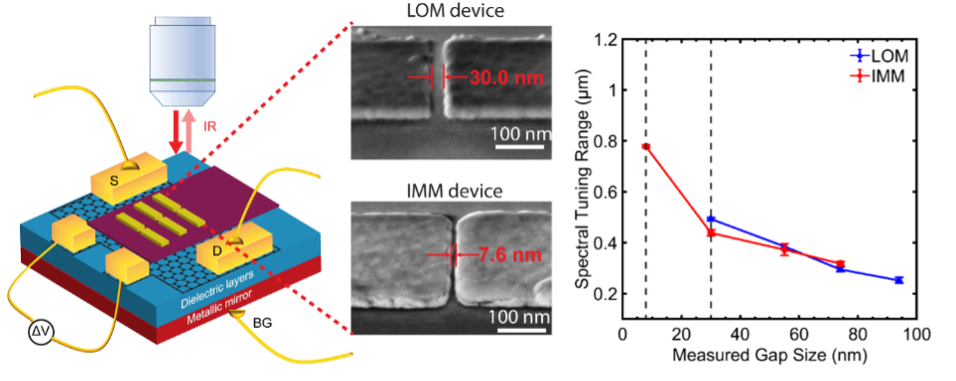
Institute Colloquium
MEET THE EXPERT ON ATOMIC CLUSTERS, NANOALLOYS AND METASURFACES
Prof. Dr. Ewald Janssens
Tunable mid-infrared plasmonic metasurfaces
January 21, 2026
Start: 2-4 p.m.
Venue: Conference room at Leibniz IPHT
Contact person: Jer-Shing Huang
holds a full professorship at the Department of Physics and Astronomy, KU Leuven. He graduated with a PhD in Physics from KU Leuven. After postdoc positions (2004-2007) at KU Leuven and FU Berlin, he worked a few years as consultant in the financial service industry (2007-2010, Deloitte), whereafter he returned to cluster research at KU Leuven with positions as visiting lecturer (2010-2012), associate professor (2012-2018), professor (2018-2022) and full professor (since 2022).
Ewald Janssens is an expert in the physical and chemical properties of clusters of atoms, nanoalloys, and metasurfaces. His research programs span from fundamental studies of small clusters in the gas phase using laser spectroscopy and mass spectrometry over investigations of electronic and (electro)catalytic properties of assemblies of size-selected clusters on oxides and two-dimensional substrates, to gate tunable metasurfaces. He has about 200 publications in peer-reviewed journals. Ten PhD students are currently under the supervision of Ewald Janssens and he has been the (co-)promoter of fifteen successful PhD paths. He has overseen twelve postdocs (currently two). Ewald has a strong global network that is built on collaborations with experimental and theory groups researching nanomaterials, clusters, and advanced optical materials. He is currently a member of the KU Leuven research council and has been vice department chair (2020-2023). He actively participates in international networks (International Research Network on Nanoalloys, COST actions) and the organization of international conferences and workshops. His research has been supported through several research grants from the Research Foundation Flanders (FWO), KU Leuven internal funds, VLAIO, and the EU. He is currently the coordinator of a Horizon 2020 MSCA Training network that deals with cluster-based catalysts for CO2 hydrogenation and electroreduction.
Metasurfaces are artificial two-dimensional materials with a periodic pattern of subwavelength-scaled structures, the meta-atoms. They can control the properties (amplitude, phase, polarization) of the light with which they interact. However, most conventional metasurfaces are “passive’’, i.e. fixed by the geometric design, and cannot be “actively’’ controlled by an external stimulus of thermal, electrical, mechanical, or optical origin. For advanced applications, it is highly desirable to develop real-time actively controllable metasurfaces.
The first part of the talk deals with our recent work on hybrid graphene-metal metasurfaces. Although graphene has exceptional tunable electrical properties, its zero-bandgap nature, low optical absorption (~2.3%), and difficult integration with metallic nanostructures have limited its use in photonic devices. By optimizing the graphene-metal metasurface design and the addition of an alumina barrier layer, we could enhance the real-time plasmonic resonance tuning [1]. Other steps forward were the inclusion of a Fabry-Perot cavity to enhance the light-graphene interaction and the addition of an encapsulating dielectric layer for stable operation in ambient conditions [2]. Bias-controlled reflectance tuning could be further enhanced, reaching modulation depths of 60%, by the reduction of the gaps between neighboring plasmonic antennas (figure). Gaps below 10 nm could be fabricated by combining lift-off, physical vapor deposition, and ion milling techniques [3].
The second part of the talk concentrates on all-optical modulation of plasmonic metasurfaces. The most common method to modulate the optical characteristics of materials is via optical pumping through a semiconductor bandgap, which requires high photon energies. We demonstrated that career multiplication by impact ionization in a silicon substrate following the interaction of the metasurface with sub-bandgap mid infrared radiation strongly modulates the optically transmitted signal on ps time scales [4]. An analytical model and numerical simulations clarify the roles of plasmonic field enhancement and impact ionization in shaping carrier dynamics [5]. These findings may trigger applications in low-photon energy ultrafast all-optical modulators.

An enhanced spectral tuning of mid-infrared metasurfaces that integrate graphene and metal antenna arrays could be obtained by reducing the gap sizes between neighbouring antennas.
References:
[1] F. Han, T.L. Pham, …, E. Janssens, Advanced Optical Materials 12 (2024) 2303085.
[2] F. Han, …, X. Zheng, N. Verellen, E. Janssens, Lasers and Photonics Reviews (2025) 2402258.
[3] F. Han, …, X. Zheng, N. Verellen, E. Janssens, Advanced Science e06898 (2025).
[4] M. Bejide, …, N.T. Tung, E. Janssens, Optics Express 29 (2021) 170-181.
[5] M. Bejide, T.L. Pham, A. Amirjani, …, E. Janssens, Materials Advances 6 (2025) 5035.
The lecture will be given in English.
